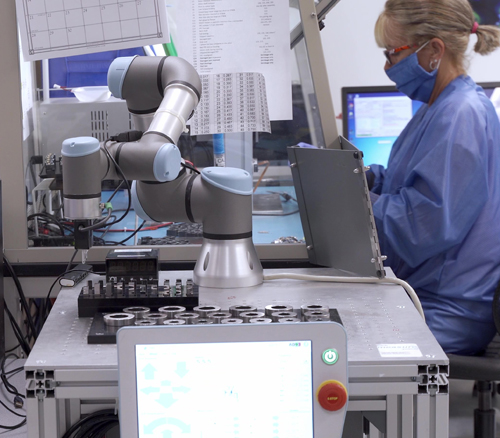In our last post, we discussed how to calculate the Return on Investment (ROI) for a Q-Span Workstation based on labor savings alone. Now we will discuss one of the biggest sources of error in those calculations.
By calculating ROI based on labor savings alone, we ignore the many ways in which automating QC inspection creates real value for your company. These value-creation sources range from the intangible, such as increased employee engagement, to hard numbers such as reducing total costs.
Here are a few ways in which a Q-Span Workstation for automated small-part measurement creates value.
1. Greater capacity
A Q-Span System allows companies to increase capacity for QC measurement inspection of small parts. Critically, this capacity increase is achieved without the concomitant costs of finding, hiring and training staff. This means that companies can maintain high quality in the face of increased demand, or meet customer requirements for 100% inspection (as with medical parts) without creating a bottleneck at QC or increasing costs due to added staffing requirements.
2. Lower cost per item and lower total cost
Automation reduces the labor cost per item, while maintaining or increasing quality. This improves a company’s product margins and bottom line.
3. More flexible and scalable operations
Automation systems like the Q-Span Workstation, which incorporate collaborative robots, allow for fast setup to measure new parts and fast change-over from one part to another. This enables companies to respond quickly to changing customer demands. The ability to run lights-out or with minimal supervision gives the ability to scale operations, for example adding shifts.
4. Higher yields and reduced scrap
Manual measurements are prone to error and variations as each employee has a different level of skill and dexterity, and a different ability to apply the calipers in a consistent position with consistent force. Further, each individual’s performance varies during a shift, a week, or a month due to fatigue, distraction or other factors. With automation, these variations are eliminated. Fewer good parts are scrapped due to operator error in measurements.
5. Fewer bad parts shipped
In any industry, reducing the incidence of shipping non-conforming parts has a direct positive impact on customer satisfaction, and contributes to customer retention and company reputation. In some industries it may help reduce warranty costs. In other industries, such as medical device manufacturing, it offers an immense value by reducing the risk of product recalls.
6. Continuous process improvement
With a Q-Span System, data on part measurement is available for immediate action. Manufacturing engineers can monitor trends, detect problems immediately, implement fixes, and monitor the results. This shortens the feedback loop for rapid, continuous process improvement.
7. Benefits to the workforce
Automation improves the work environment for both employee and employer. Automating the dull and repetitive work reduces the risk of repetitive stress injuries for employees and helps companies avoid worker’s compensation claims. Employees can be promoted to work on more complex and rewarding assignments. More interesting work increases engagement, which reduces sick days and turnover. As a result, the employer saves on hiring and training costs.
These value-creation benefits can be hard to quantify with a dollar amount. Therefore, most return on investment (ROI) calculations are often made based on labor savings alone. Nonetheless, including these value-creation factors can give you a much truer picture of the benefits to your company of automating small-part measurement in the QC department.

A Q-Span Workstation with a collaborative robot helps this manufacturer improve QC and increase capacity faster than headcount.
